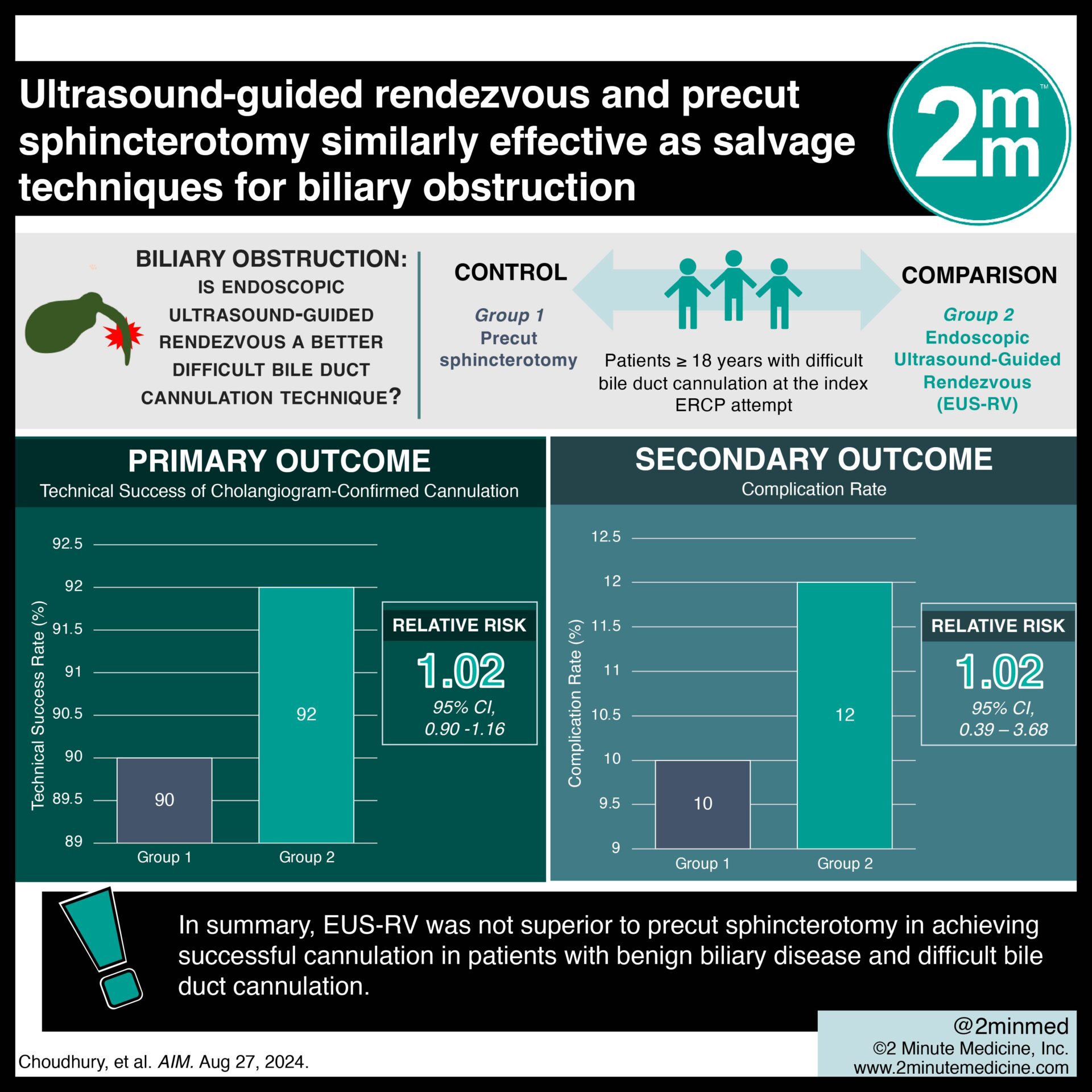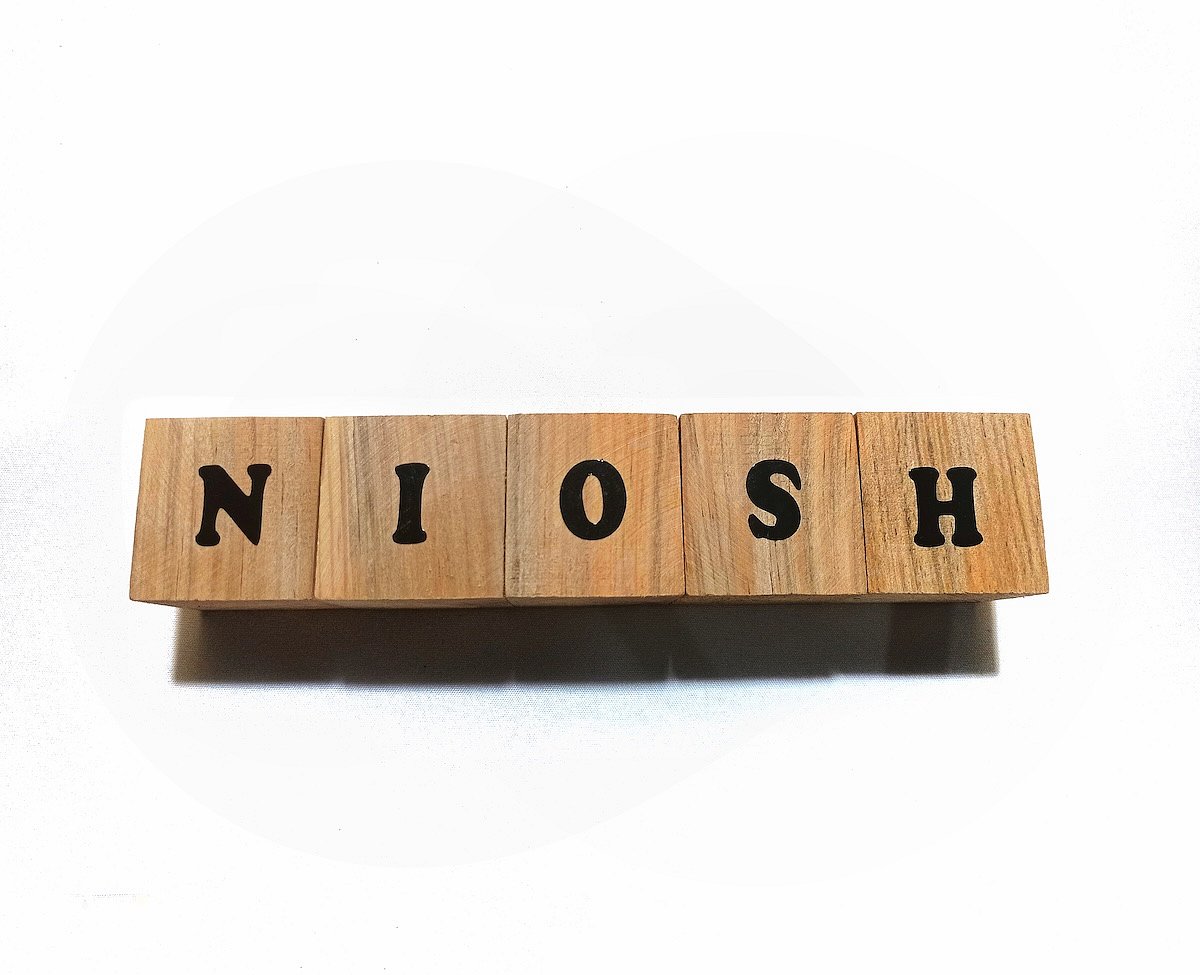
2. Both techniques exhibited similar procedure times and rate of adverse events, although radiation exposure was significantly higher in patients who underwent ultrasound-guided rendezvous.
Evidence Rating Level: 1 (Excellent)
Study Rundown: Endoscopic retrograde cholangiopancreatography (ERCP) combines endoscopy and fluoroscopy to diagnose and treat diseases involving the biliary and pancreatic ducts. ERCP can be technically challenging, and successful cannulation of the common bile duct often depends on the endoscopist’s level of experience and the patient’s biliary anatomy, particularly the anatomy of the papilla. Prolonged manipulation of the papilla can lead to increased risk for post-ERCP pancreatitis (PEP); thus, current guidelines advise changing cannulation strategies in patients who exhibit difficult biliary cannulation by using different “salvage techniques.” The conventional salvage technique, precut sphincterotomy, involves an incision of the papilla with the use of a sphincterotome prior to gaining biliary cannulation. A relatively newer technique, endoscopic ultrasound-guided rendezvous (EUS-RV), consists of puncturing the bile duct using EUS guidance and maneuvering of the guidewire across the papilla prior to cannulation with ERCP. Data comparing precut sphincterotomy and EUS-RV are limited and have been confined to retrospective studies. Hence, this randomized controlled trial aimed to investigate the efficacy of the two salvage techniques in patients with benign biliary disease. Overall, it showed that both EUS-RV and precut sphincterotomy had similar technical success rates with similar procedure times and incidence of adverse events. The two techniques appeared to be complementary, with all patients with failure using one technique successfully being cannulated after crossing over to the other group. However, radiation exposure was nearly three times higher in patients who underwent EUS-RV. The generalizability of these findings was limited by the small sample size and the fact the trial was performed at a single institution. Nonetheless, this study suggests that EUS-RV may not be superior to the standard salvage strategy of precut sphincterotomy.
Click to read the study in AIM
In-Depth [randomized controlled trial]: This parallel-group, superiority randomized-controlled trial investigated the efficacy and safety of EUS-RV and precut sphincterotomy in patients with benign biliary disease and difficult biliary cannulation. Individuals 18 years of age or older with difficult bile duct cannulation at the index ERCP attempt with a native papilla and benign extrahepatic biliary obstruction were included. Difficult bile duct cannulation was defined as either more than 5 contacts with the papilla, more than 5 minutes spent cannulating after visualization of the papilla, or more than 1 unintended pancreatic duct cannulation. The primary outcome was defined as cholangiogram-confirmed cannulation. Secondary outcomes included procedure time, adverse events, and dose of radiation. Out of 422 total patients assessed for eligibility, 100 had difficult bile duct cannulation for a benign cause, and 50 patients were assigned randomly to the EUS-RV and precut sphincterotomy groups respectively. The most common indications for ERCP were choledocholithiasis (79%) and biliary structure (12%). Deep biliary cannulation was achieved in 46 patients using EUS-RV and 45 patients using precut sphincterotomy (relative risk, 1.02; 95% confidence interval [CI], 0.90 to 1.16). The median procedure time was 10.1 minutes for EUS-RV and 9.75 minutes for precut sphincterotomy, and the overall complication rates were 12% and 10%, respectively (relative risk, 1.20; 95% CI, 0.39 to 3.68). 5 patients in each group developed PEP. The radiation exposure was 200.2 mGy in the EUS-RV group versus 67.8 mGy in the precut sphincterotomy group (median difference, 132.4; 95% CI, 226.69 to 38.1). In summary, EUS-RV was not superior to precut sphincterotomy in achieving successful cannulation in patients with benign biliary disease and difficult bile duct cannulation.
Image: PD
©2024 2 Minute Medicine, Inc. All rights reserved. No works may be reproduced without expressed written consent from 2 Minute Medicine, Inc. Inquire about licensing here. No article should be construed as medical advice and is not intended as such by the authors or by 2 Minute Medicine, Inc.




















Create Post
Twitter/X Preview
Logout